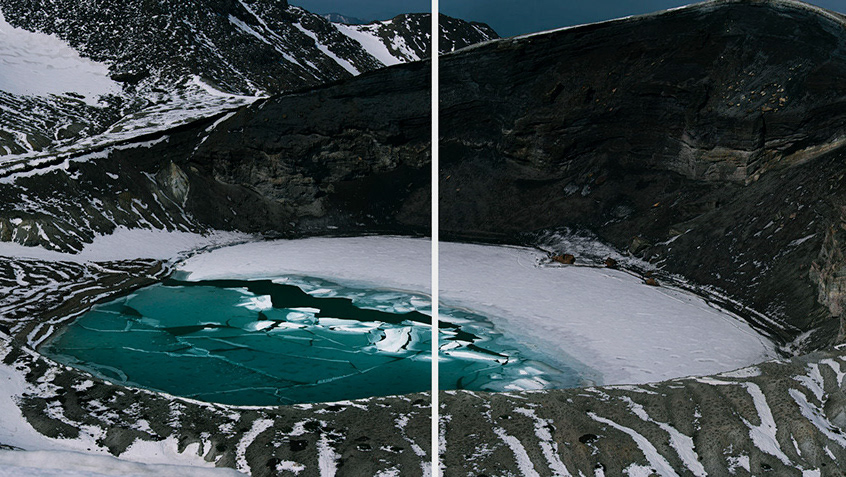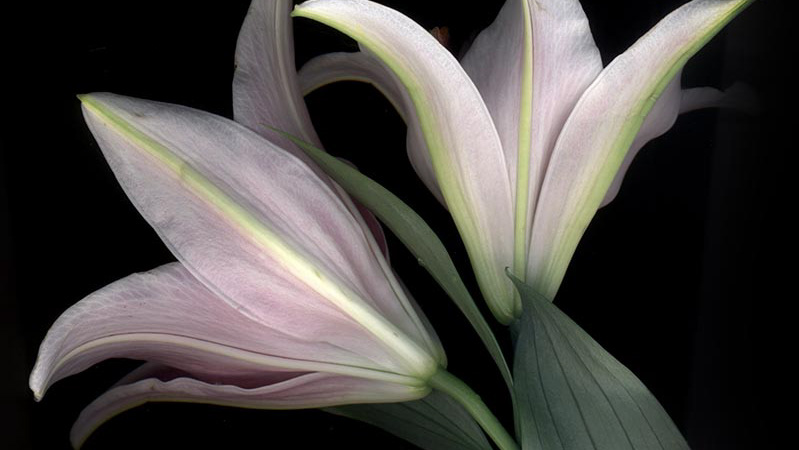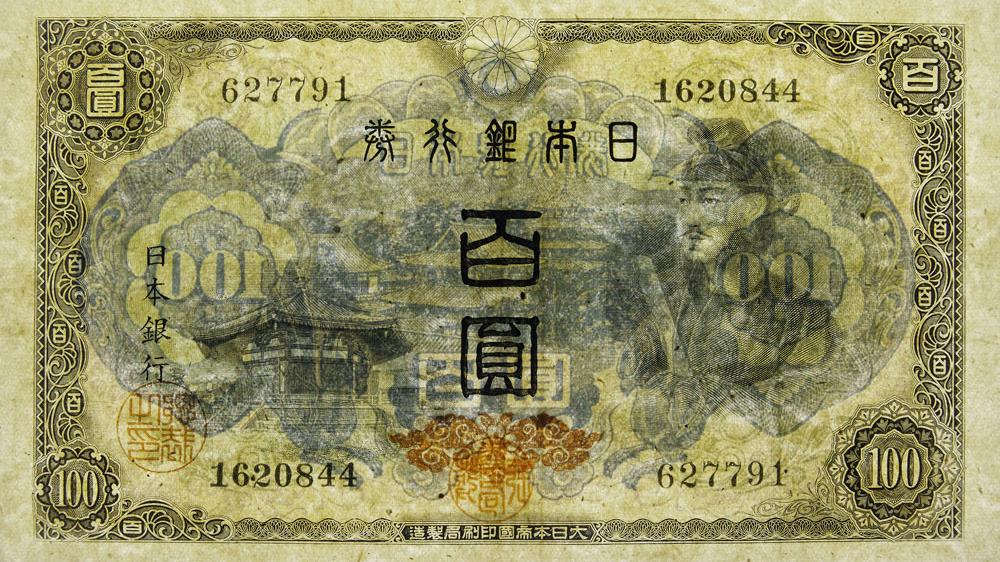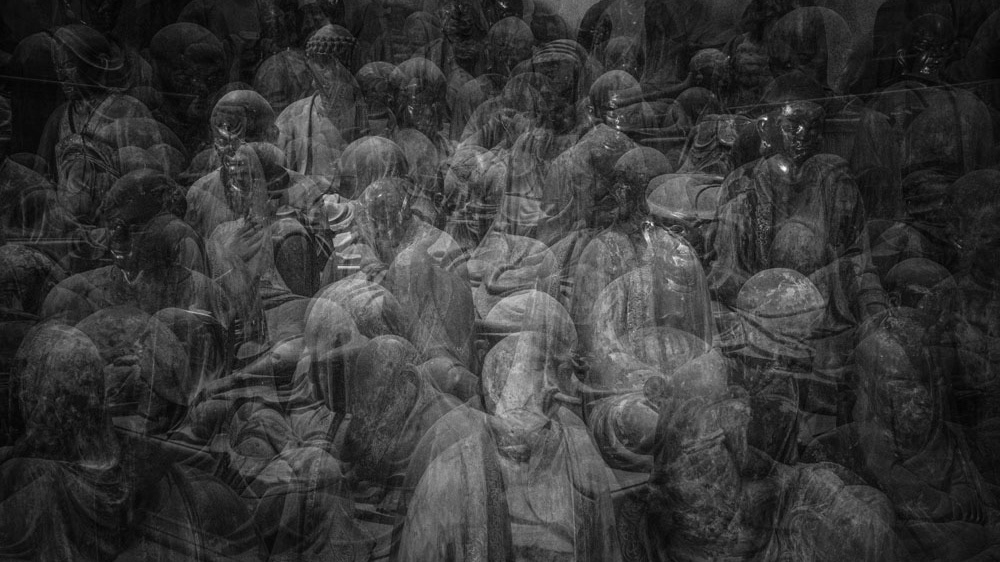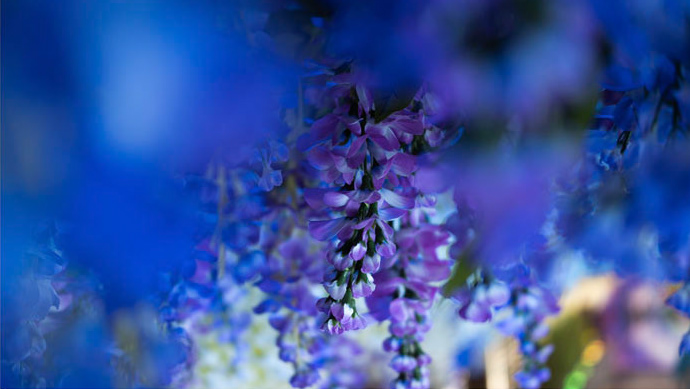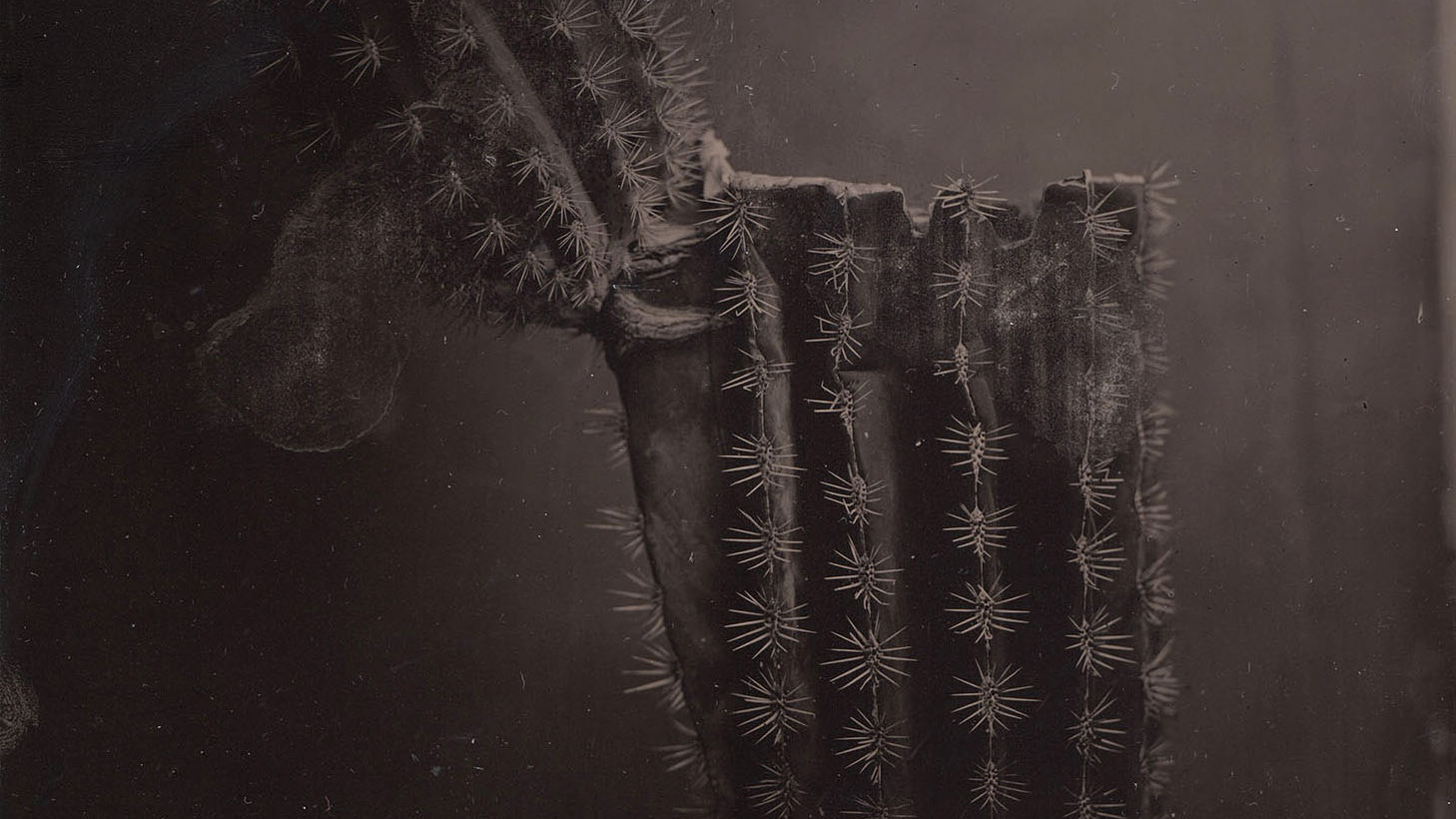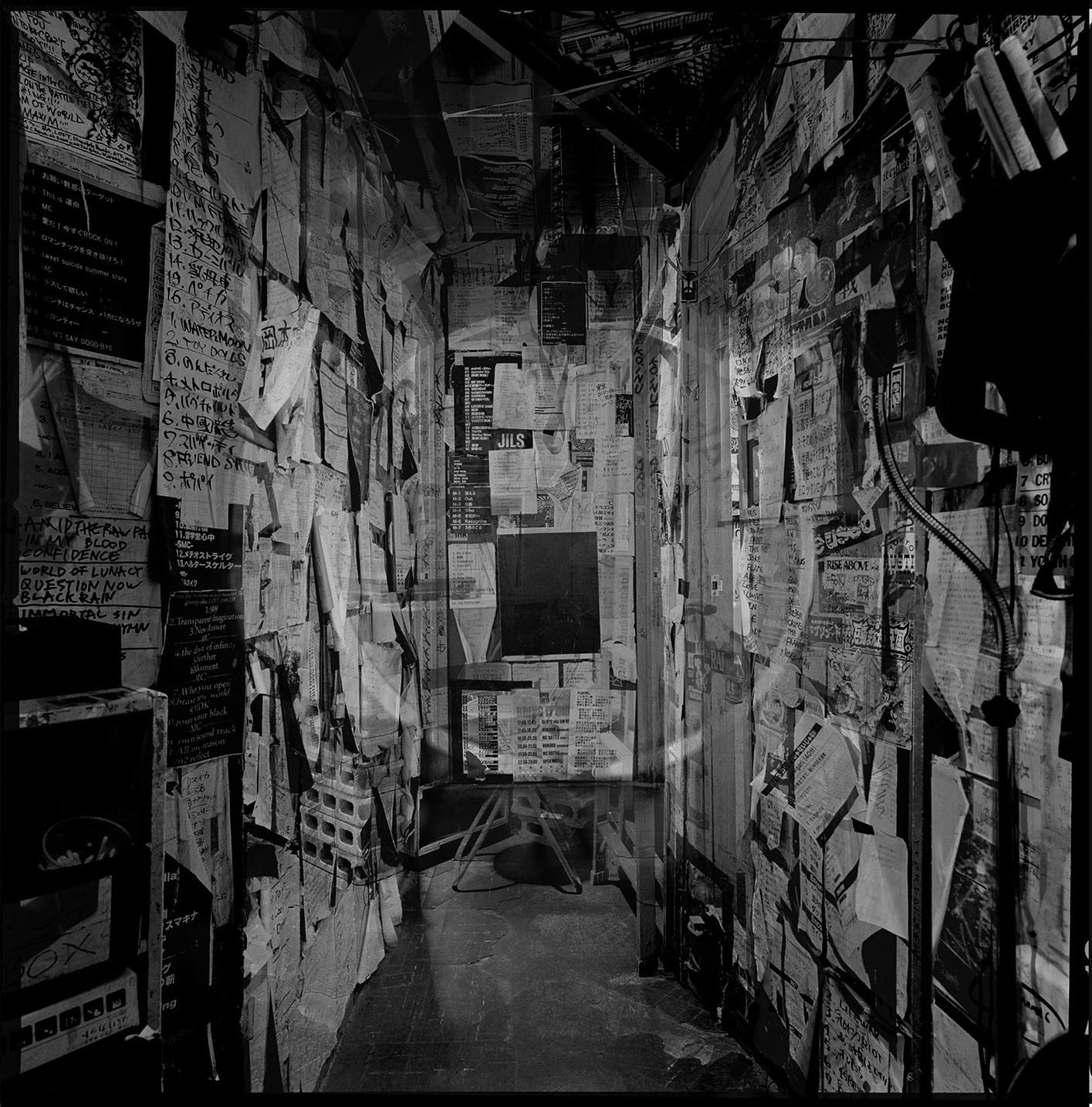




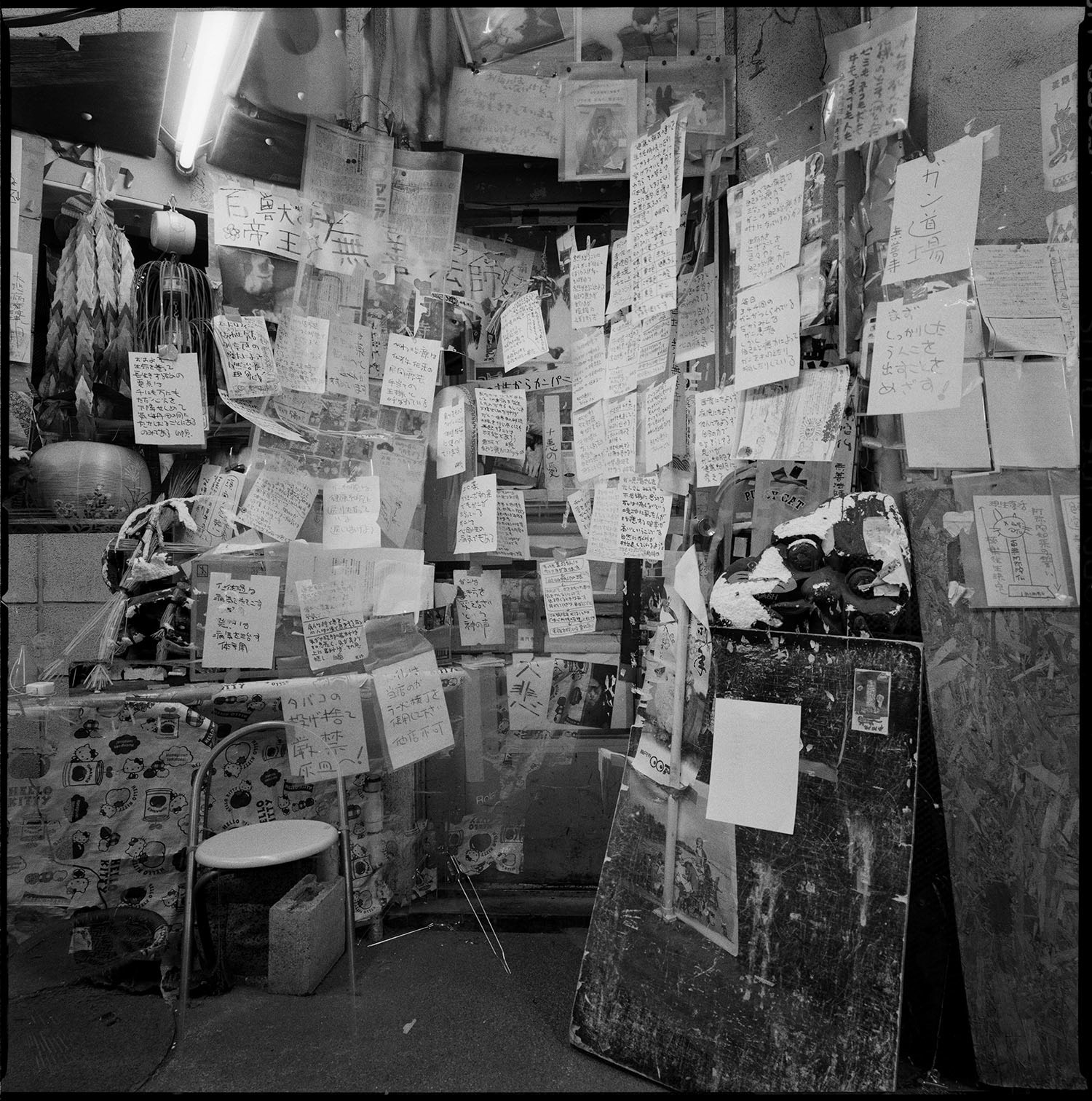
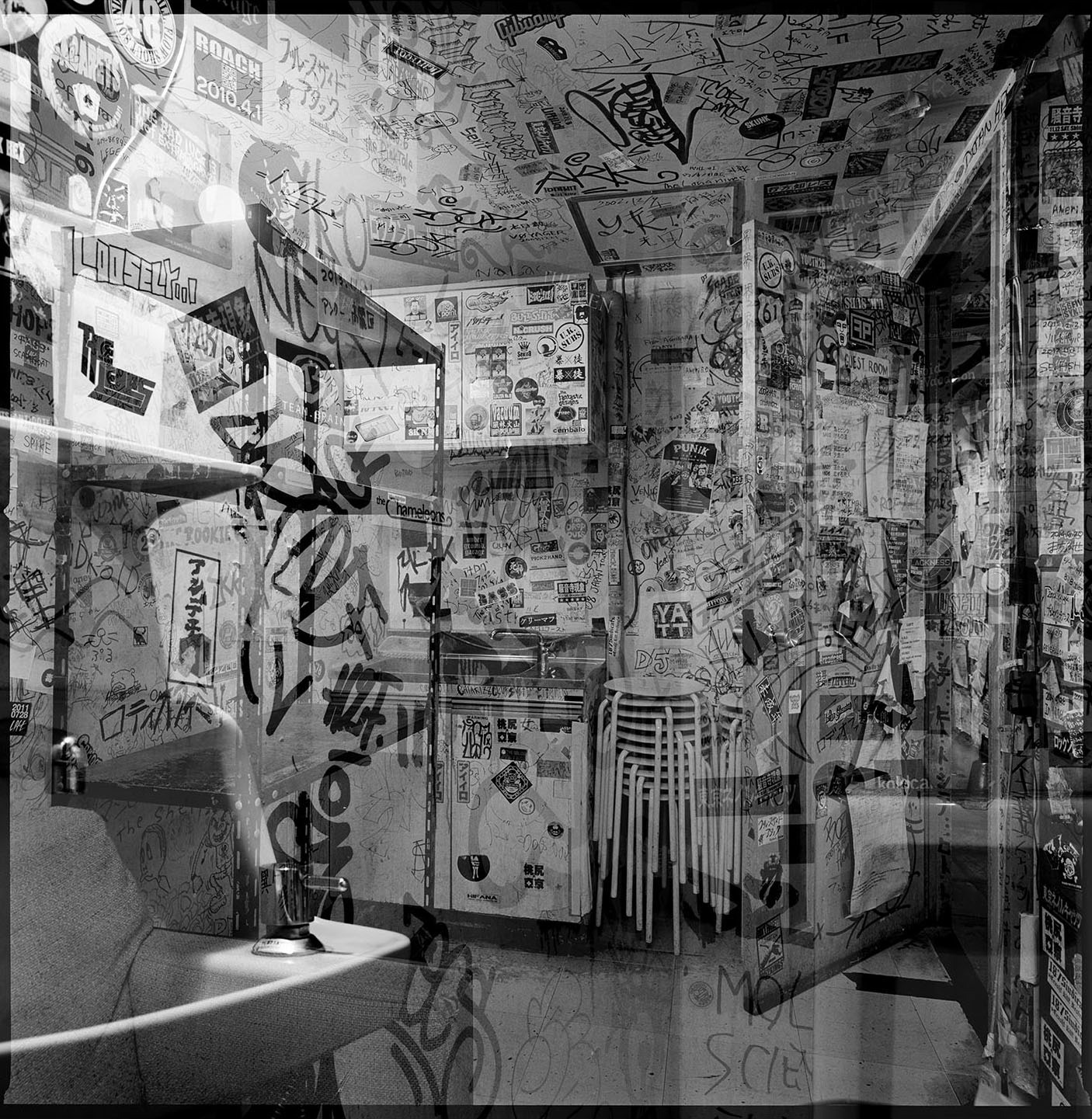
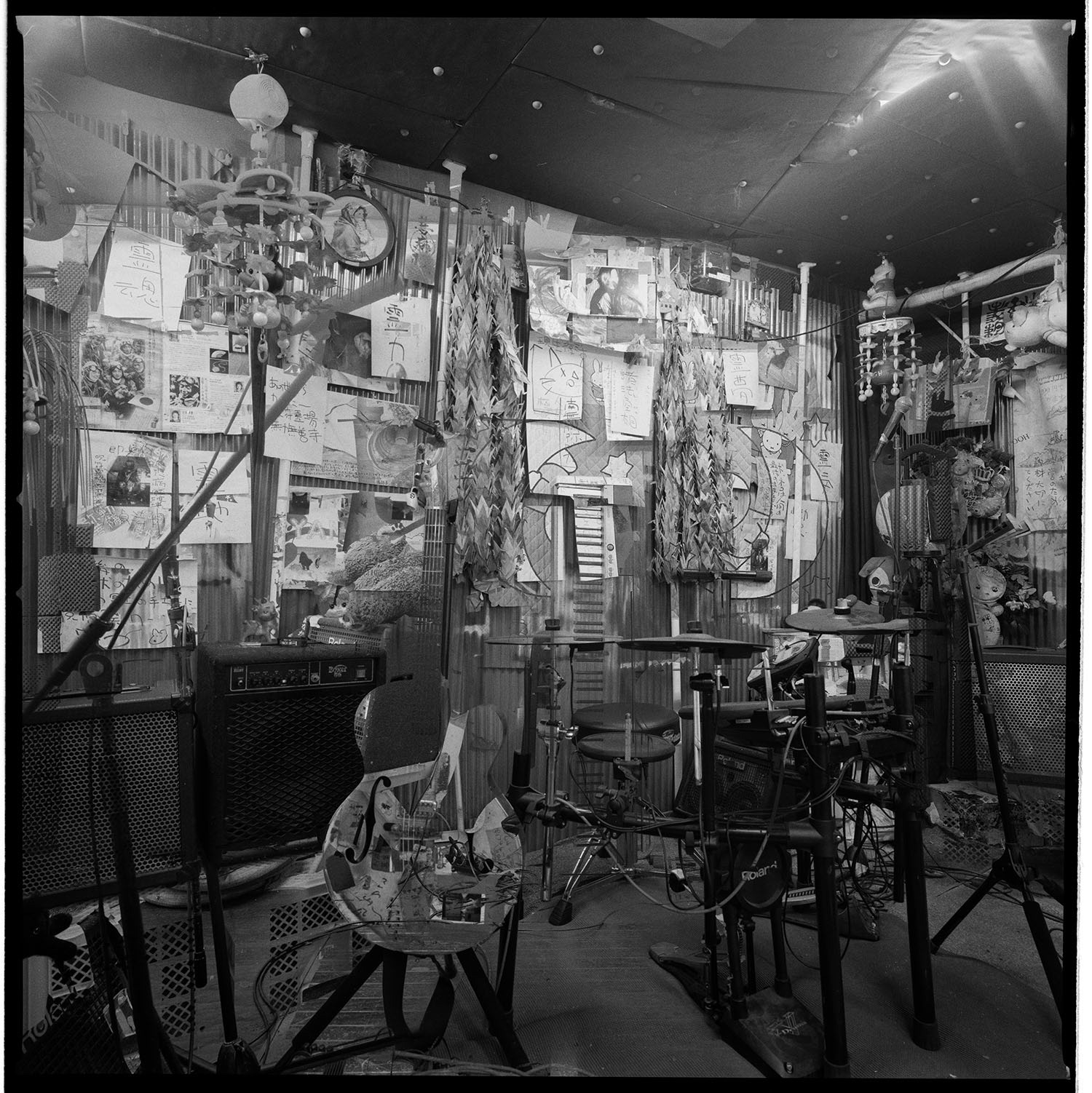

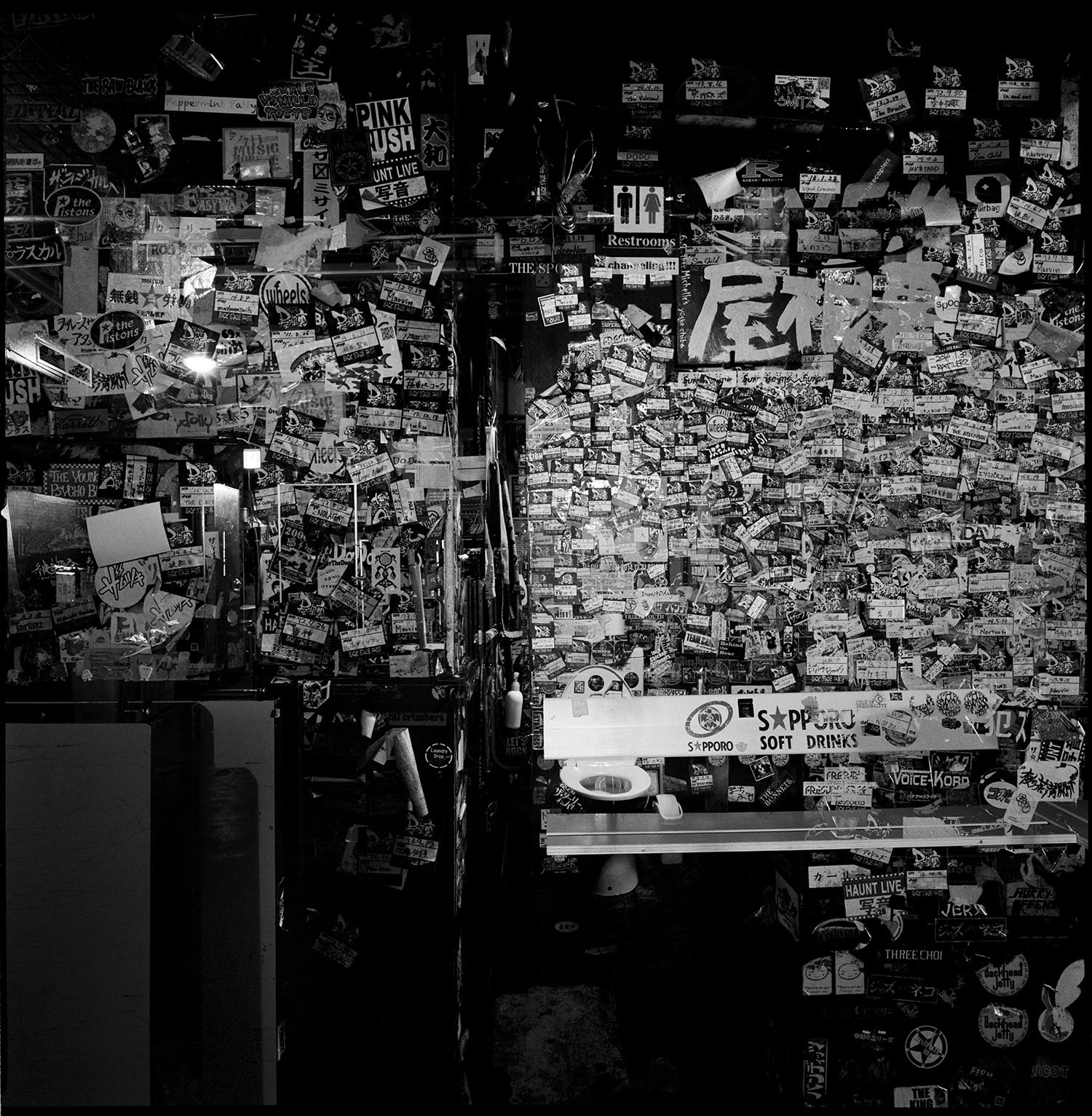
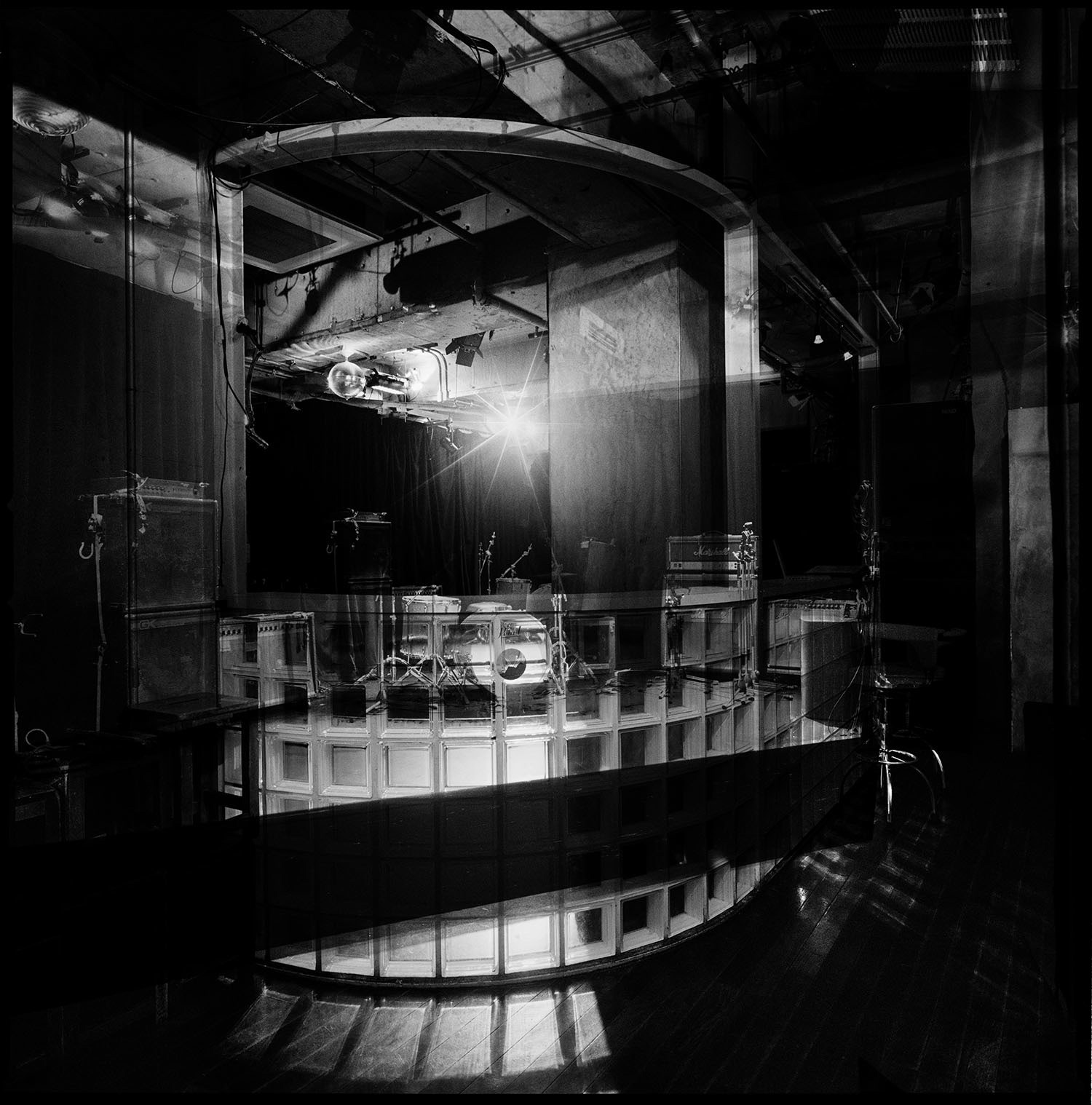
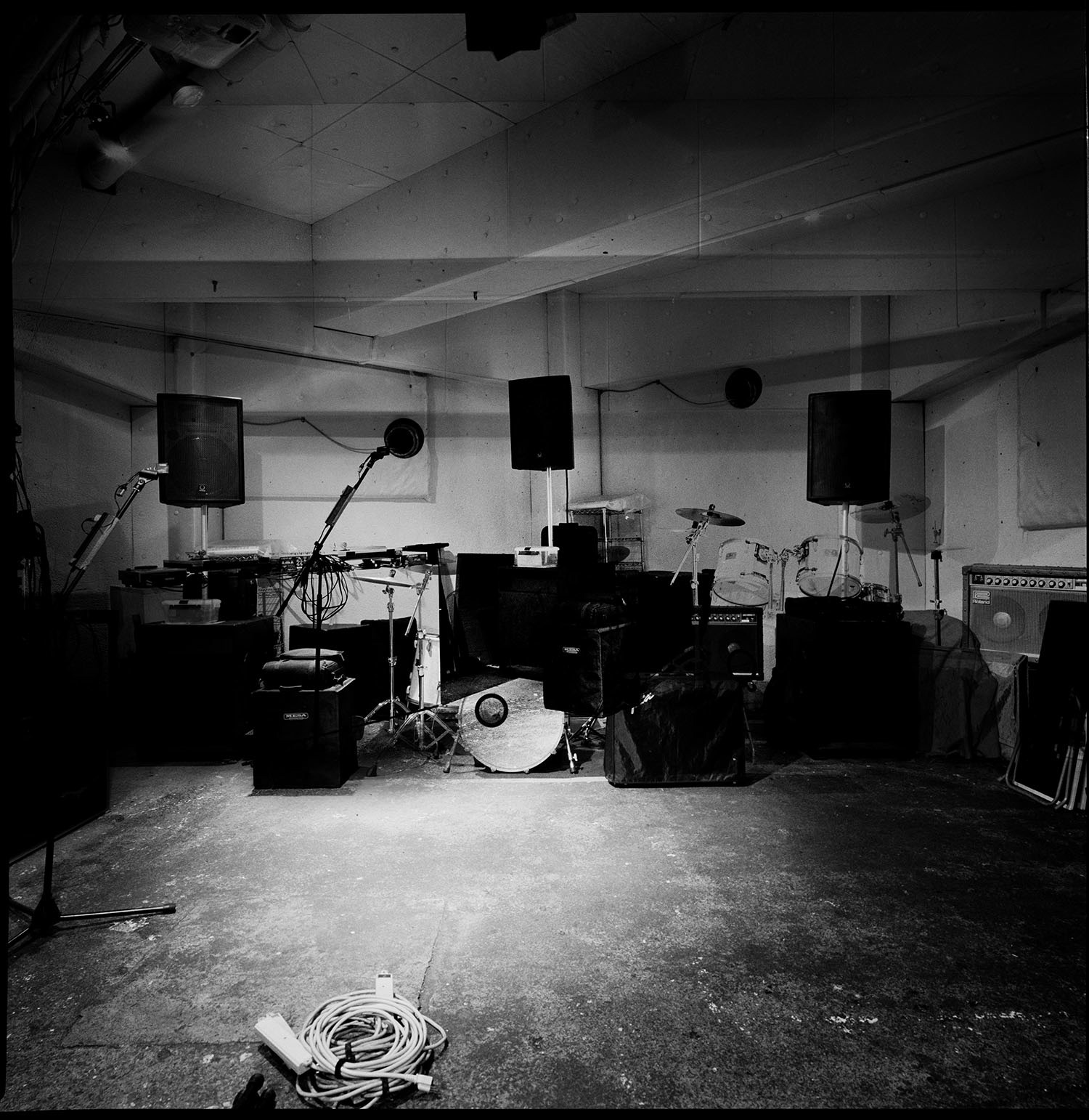

写真は常に過ぎ去った時間の一点である。ロラン ・バルトの言葉を借りれば「それは、かつて、あった」であり、ジャック ・デリダで言えば時間経過の「永久的延期」だ。特に前者は写真を見る側からの、後者は撮る側からの論理に紐づけられるだろう。 家族のアルパムを開けば自分よりも若い両親の姿を発見し、カメラを持てば自分の子供の「今」を留めることができる。このことは、時の流れとはあまり関係の無さそうな静物写真や風景写真においても、写真のリアリティという点で非常に重要な要素だと言えるだろう。過去の一点に属しているという事実は、撮影された写真におけるほとんど唯 一の共通的な真実でもある。どんなに普遍的な眺めであっても、過去に確実に存在した一 瞬であるという事実があることで、写真はリアリティという価値を内包できるのではないだろうか。それは写真というメディアが発する最大のメッセージでもあるかもしれない。 骨董屋で古写真を眺めるとき、そこには生き生きとした肖像やある土地の風習、文化を見ることができる。時折、それらが遠い過去のものであろうことは理解しつつ、生きた人間の存在と時間が確かに感じられ、心のなかのなにかが揺さぶられることがある。時間や空間を一気に圧縮し、観るものを突き刺す、写真のこのような機能は、作者不詳の古写真などから強く感じられることがあるだろう。そこには、時を留める写真の本質が垣間見られるようである。 僕がライブハウスという被写体に対峙したときに感じたものは、まさにこういった時間の蓄積、あるいは地層のようなものだった。 階段や、扉、ステー ジ、廊下。至るところに潜むのは数十年前の自分の残像であり、友人の、そしてそこですれ違った人たちの気配である。さらに言えば、その日の夜に訪れるであろう演者や客の予感までもが含まれる。 そして、この本に収録されたライブハウスの風景は、この作品を観る人それぞれの時間の一点であるとも言えるのではないだろうか。
PHOTOGRAPH IS A REPRESENTATION OF A SINGLE MOMENT IN THE PAST.
Roland Barthes described this as "that-has-been", and Jacques Derrida called it "indefinite deferral" of the passage of time. In particular the former is tied to the viewer's logic and the latter to that of the photographer. If you open your family's photo album, you will discover the image of your parents from when they were younger than you, and if you use your camera you can capture your children as they are "now". Even in still life and landscape photography, in which the flow of time seems irrelevant, this is an extremely important part of what a photograph is. The fact that they belong to a single point in the past is the only common truth in all photos taken. No matter how universal the perspective, a photograph contains a moment that existed, therefore one might say that a photograph holds reality which might be the strongest message photography as a medium offers. When you look upon old photographs in an antique store, there you can see lively portraits, the customs and culture. Even though the moments belong to the distant past, the times and existence of lives lived can be felt, and something stirs deep within your soul. This function of photography, to compress time and space all at once and to pierce the viewer's minds, can be more keenly felt in old photographs taken by unknown photographers. It gives you a sense that you are catching a glimpse of truth in
a moment in time. What I felt when I confronted the subject of live music clubs (in "Live House") was precisely this accumulation or layering of times. Be it in the stairs, the doors, the stage, or the halls, lurking every where is an after image of myself from decades ago, as well as the presence of friends and the people
I encountered there. On top of this, it includes the premonition of performers and guests who may be present on that evening. And so, you might even say that the scenes of the live music club included in this photo book represents a point in time for each person who sees it, one very different to the next.
a moment in time. What I felt when I confronted the subject of live music clubs (in "Live House") was precisely this accumulation or layering of times. Be it in the stairs, the doors, the stage, or the halls, lurking every where is an after image of myself from decades ago, as well as the presence of friends and the people
I encountered there. On top of this, it includes the premonition of performers and guests who may be present on that evening. And so, you might even say that the scenes of the live music club included in this photo book represents a point in time for each person who sees it, one very different to the next.

